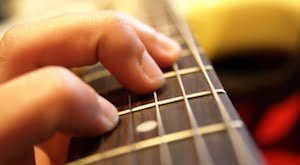Classical guitar happens to be one of the most beautiful musical instruments that there is. It helps to transform your personal emotions into a melody.
You can easily express love, distress, melancholy, cheerfulness, and betrayal to name a few feelings while you are strumming through its various chords. It is popularly known as a Spanish guitar. Its basic body as well as the style resemble an acoustic guitar. Though there are some noticeable differences. Classical guitars’ fretboards are wider and they use nylon strings which other guitars don’t. There is a notable difference in the style of playing between classical guitars and other guitars. It is played by picking the strings while other guitars are played by strumming.
Phase One: Basics
The initial phase of training in classical guitar will give attention to the fundamentals, like sitting positions, guitar holding, hand motions, and the movement of the thumb. These minute details are very essential while learning to play the guitar perfectly. Once you have learned these, it will be more convenient for you to pick up the advanced guitar skills in the second phase. That is where the real fun begins.
Phase Two: Groovy Beats
This phase focuses on the beats, sounds, and notes of a classical guitar. Beats refer to the sound that is produced when two varying notes are being played together. Beats normally vary in their speed depending on your way of playing the guitar. Notes are the primary important aspect of playing the guitar. You will learn to play each of the notes individually, and simultaneously, and then with practice, you will be able to play them together. After you have acquired an understanding of these basic notes, you can progress to the next phase.
Phase Three: Strokes and Harmonics
It will include the free stroke and rest strokes. This phase will teach you to understand artificial harmonics.
Phase Four: Get Rhythmic
This stage of learning the classical guitar is very important as it will teach you to identify the differences and similarities between the dynamics, pitch, timbre, and rhythm. All of these need to be carefully comprehended in detail along with regular practice if you want to be perfect at playing a classical guitar. Lastly, you will be taught to play various scales. This will include common scales along with their applications.
Regular and competent lessons in classical guitar will help you in staying focused and driven. A good lesson in classical guitar playing will not just teach you to play it but also get you involved in the art. If you aim to be a good classical guitar player then weekly classes on classical guitar instructions under a competent instructor is heavily recommended. Irrespective of the fact whether you’re an advanced guitar player or a beginner in the practice, a good teacher and committed daily practice sessions are invaluable assets. A good quality lesson in classical guitar will save not only your time but also will keep you interested. It will also prevent you from picking up bad guitar-playing habits which might deter your progress as a guitar player. Experienced guitar players, which also include concert performers, learn a lot by studying the styles of other musicians.

